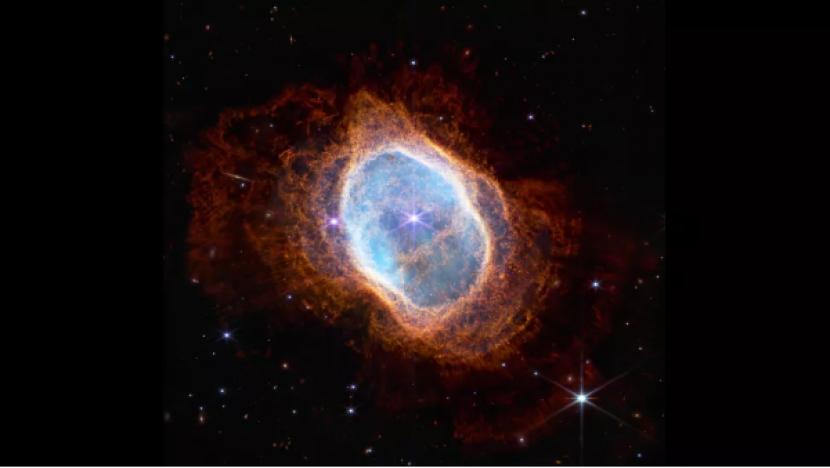The Southern Ring Nebula is located 2,000 light years away.
REPUBLIKA.CO.ID, JAKARTA — The James Webb telescope revealed a photo Southern Ring Nebula with stunning detail. The Southern Ring Nebula is a ring of gas and dust that grows out of the explosion of stellar death. Webb’s photo shows a double star system at its center.
The Southern Ring Nebula is located 2,000 light years away. This is nebula planets, or clouds of gas expanding around a dying star. After exploding all of its outer layers, the dying white dwarf at the heart of the nebula is extremely hot and releases intense ultraviolet radiation, causing the surrounding gas to ignite.
“We know this is a binary star, but we can’t see much of the actual star that produced the nebula,” said astrophysicist Karl Gordon.
The star, once a massive star that exploded into a supernova, is now a dense white dwarf. The Southern Ring Nebula is being formed because most of the stellar mass is currently moving outward at a speed of 14 kilometers per second.
What’s left emits heat, or infrared radiation, and soft x-rays, but they’re usually obscured by the fiery light of a still, brighter companion star. It was modified by Webb’s Mid Infrared Instrument, or MIRI.
NIRCam features clouds of gas and dust with a sponge-like texture and filled with bubbles created by stellar winds in the Southern Ring Nebula’s outer shell, where hydrocarbon molecules develop on dust grains.
These clouds appear as a network of frothy blue filaments in MIRI. The hot ionized gas in the center of the ring is seen as a brilliant red haze in the mid-infrared view from MIRI and as a blue haze in the near-infrared photos from NIRCam.
Two brilliant stars, one red and one bluish white, blazed in the middle of it all.
“In MIRI, stars shine red because there is dust around them,” Gordon said Inverse.
“We have to see the two stars very clearly,” he said.
These released images from the James Webb Teleskpp are the culmination of more than two decades of telescope development that began in 1996. General discussion of the project began even earlier. Over the years, Webb was sometimes severely underfunded, and at least once was in danger of being canceled due to soaring costs. Webb was finally launched into orbit on December 25, 2021.


